Overclockable Pentium Anniversary Edition Review: The Intel Pentium G3258
by Ian Cutress on July 14, 2014 10:00 AM EST- Posted in
- CPUs
- Intel
- Pentium
- Overclocking
- Pentium-AE
- G3258
Gaming and Synthetics on Processor Graphics
The Haswell Pentium and Celeron ranges are filled with GT1 solutions, referred to as simply 'HD (Haswell)'. The same is true for Sandy Bridge and Ivy Bridge, although with Haswell the i3 CPU range upgraded to HD 4400 or HD 4600 - a significant leap in performance. As the graphics power is low for full 3D titles, and as such we test on lower frequencies, we might see the CPU power matter more here than with our Devil's Canyon review.
F1 2013
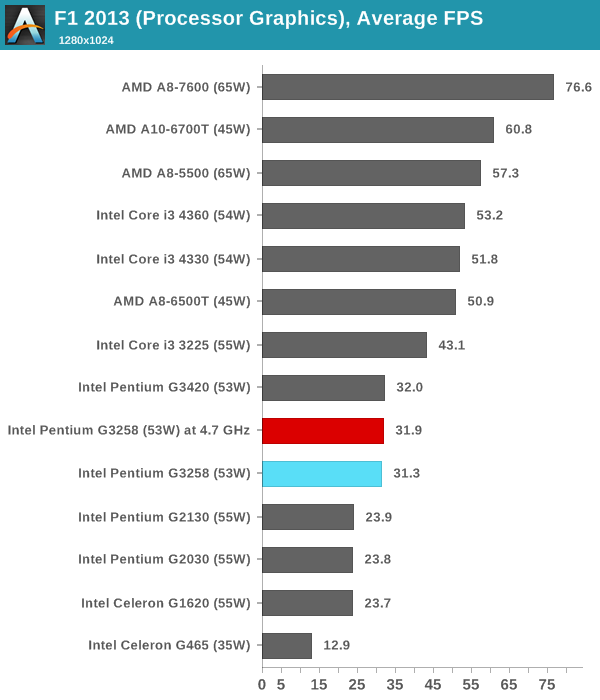

Bioshock Infinite
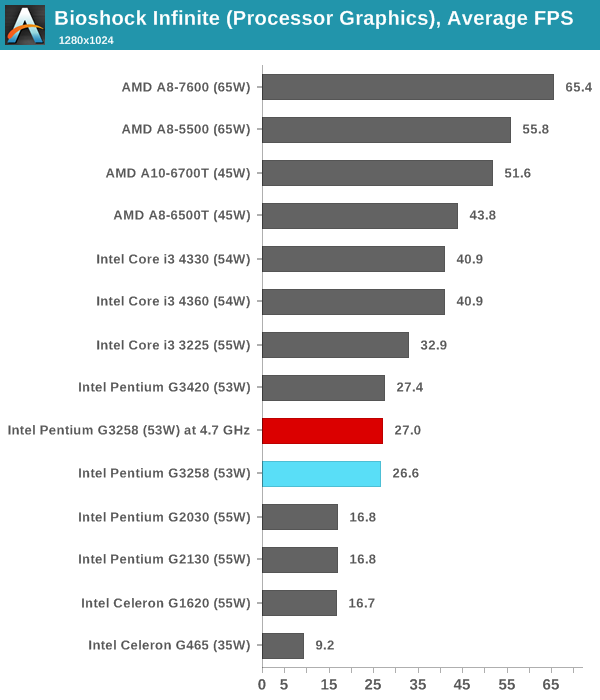

Tomb Raider
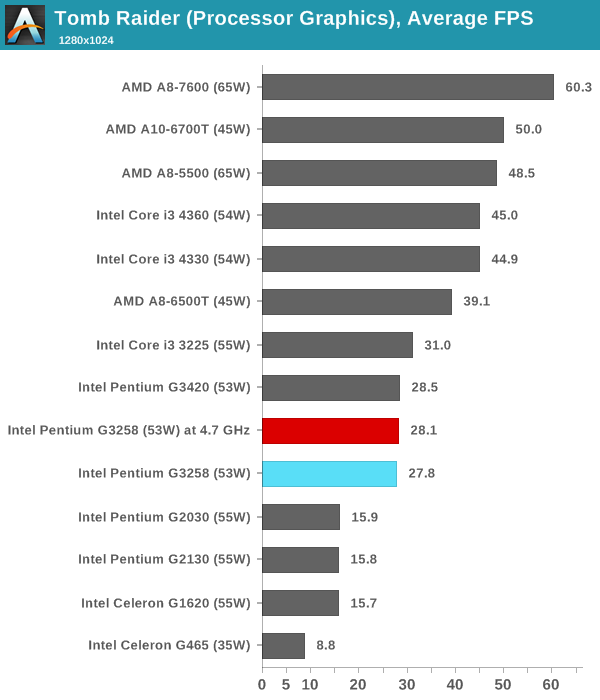
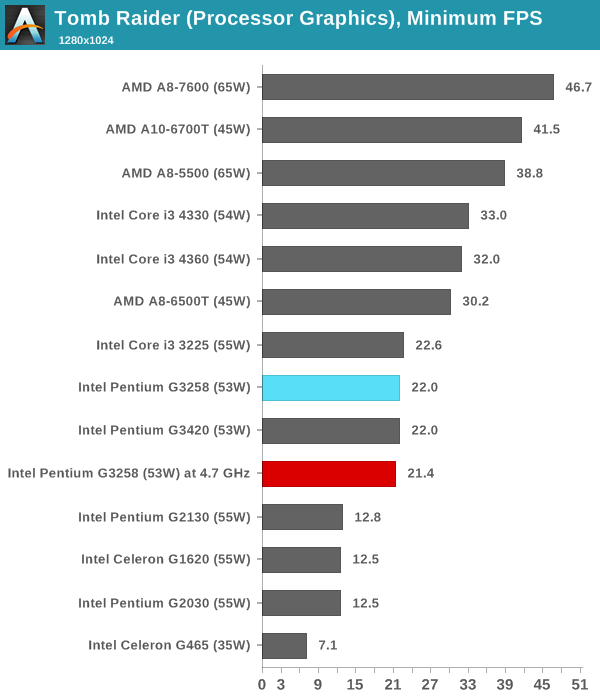
Sleeping Dogs
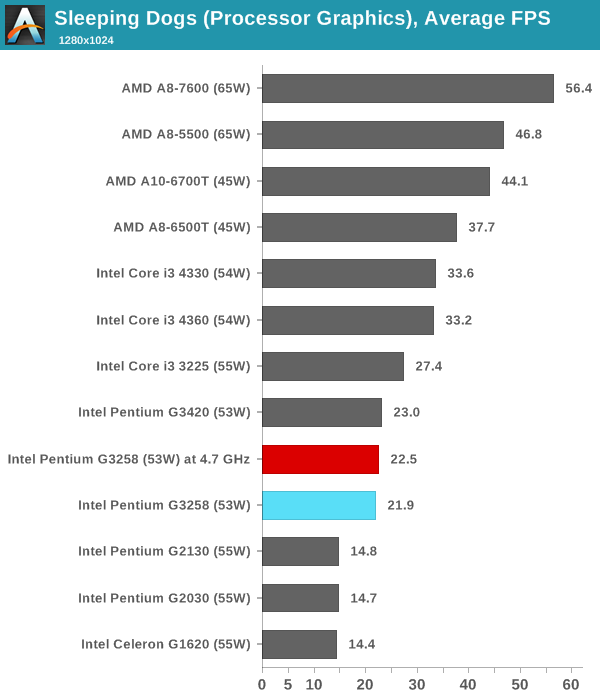
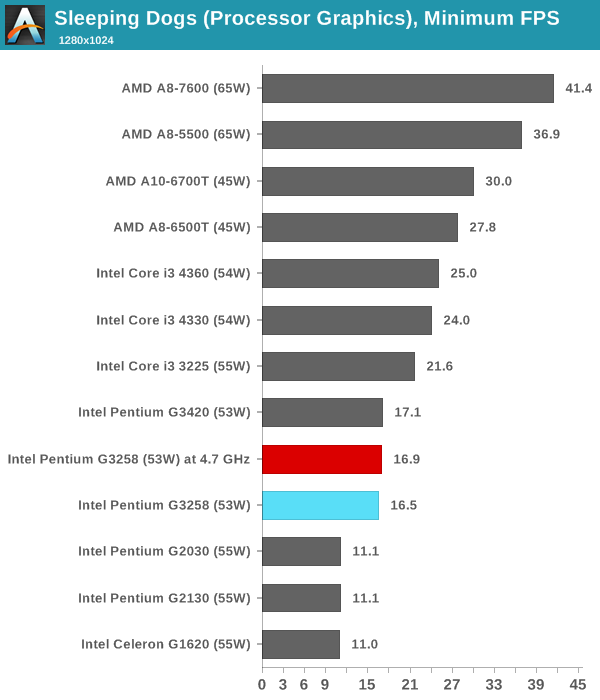
Company of Heroes 2
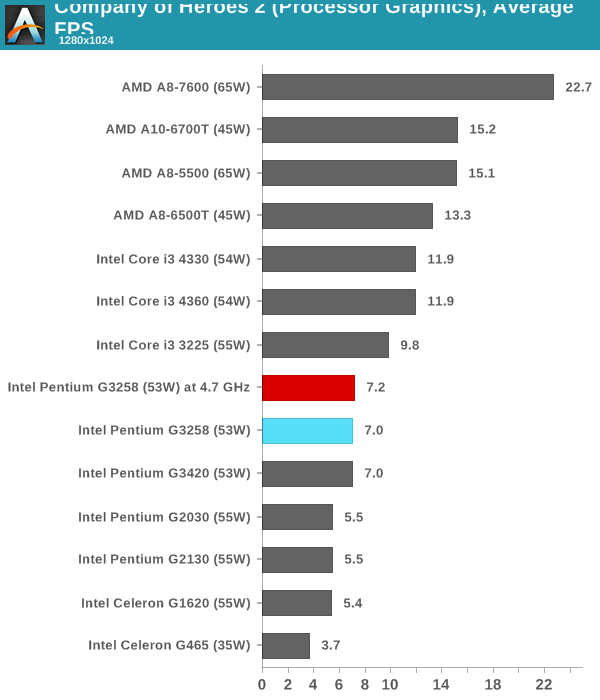
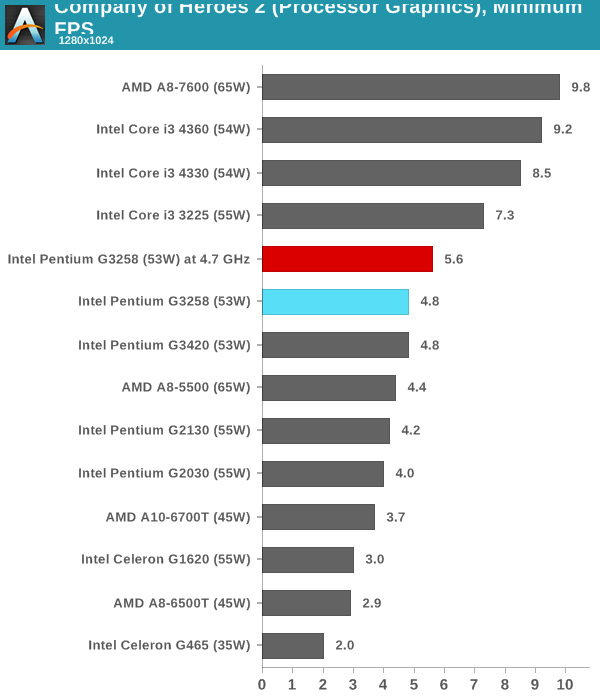
CompuBench 1.5
CompuBench is a new addition to our CPU benchmark suite, and as such we have only tested it on the following processors. The software uses OpenCL commands to process parallel information for a range of tests, and we use the flow management and particle simulation benchmarks here.
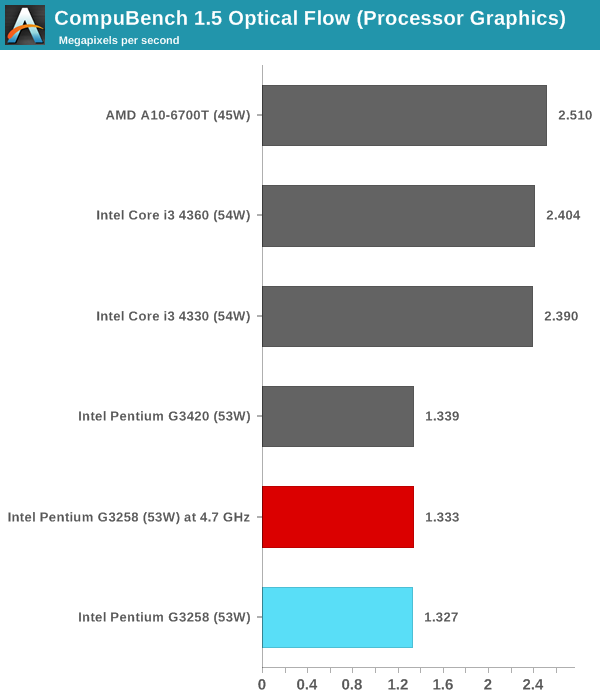
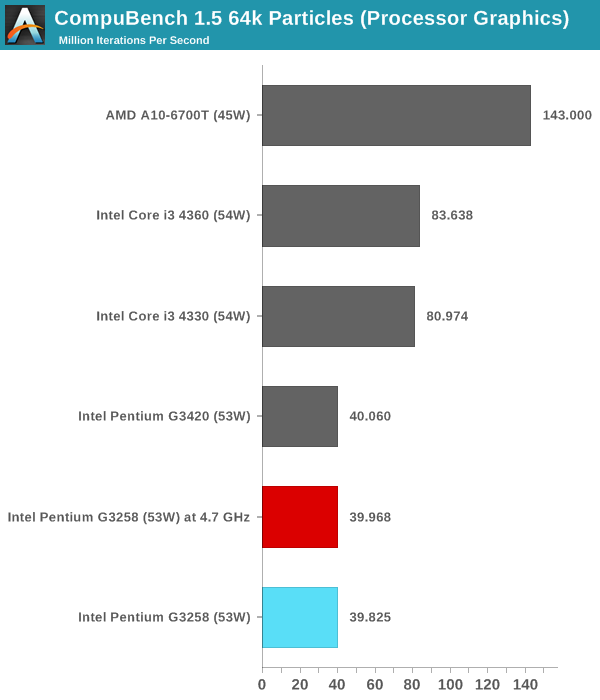
3DMark Fire Strike
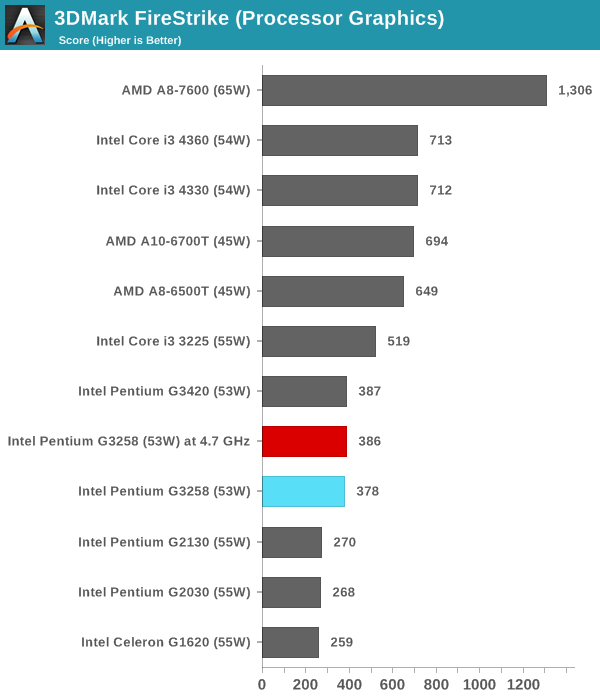
The increase in speed due to overclocking only has one effect on gaming using the internal graphics - a slight advantage to minimum frame rates. Unfortunately the IGP is crippled too much to see any gain in performance for average frame rates and AMD APUs at similar power outputs have up to a 2x advantage.










96 Comments
View All Comments
mapesdhs - Monday, July 14, 2014 - link
Thanks for the article! An interesting piece, especially the conclusion which is spot on,
but it does need a bit of a proof read, eg. "That is benefit afforded by an overclocking
platform platform...", was particularly painful. ;D
Ian.
monstercameron - Monday, July 14, 2014 - link
cinebench r15 charts seem incorrect.Ian Cutress - Monday, July 14, 2014 - link
Mixed up some of the ST and MT data. Should be fixed now.TheJian - Tuesday, July 15, 2014 - link
So how far do you get on the stock fan? It's good for 95w and this chip is 53w with gpu on, so disabling it using the stock HSF gets you how far? A stock fan built for i7's should get a reasonable overclock with no extra cost (not 4.7ghz obviously). Since this is truly aimed at the poor (who else? people wanting to far around with ocing?), they'll likely be trying it with stock.Any data on that, or did I miss that point in the article? I'd like to know what is stable on stock. Nobody seems to cover this.
techtonic717 - Wednesday, July 16, 2014 - link
I have overclocked one on an Asus H81M motherboard with the stock heatsink. 4.2ghz runs nice. The motherboard ups the voltage to 1.224v and running OCCT it gets temps of up to 64 degrees Celsius at full load. If I go up to 4.4ghz the motherboard ups the voltage to 1.37v and then the temps are in the high 70's to low 80's. Manually lowering the voltage results in crashing. It is still stable but I think 4.2-4.3ghz on the stock cooler is the best option.Zap - Thursday, July 17, 2014 - link
This information is much more useful than the typical "stock HSF sucks" comments. Thanks!EagleEye2014 - Tuesday, August 5, 2014 - link
Hi, could you please provide me the exact motherboard name, i would like to try it at my place and buying a 87 & 97 chip set boards are little costlier to me now, also i have checked the compatible boards for this processor at Intel site and i wasn't able to locate any Asus boards with the 81 chipset, saw a few MSI 81 chipset boards which are not available at my place.smunter6 - Monday, July 14, 2014 - link
Why would you pair this with dual 770's? Of course it's not going to perform as well as an i3, but what about single GPU setups (I saw the results in the first page, but no minimum frame rates??) I can't imagine anyone spending $700+ on GPU's and then reaching this low for the processor, but for a $400 build with a 270 or a 750 Ti? It's a whole different ball game. Please base your review off of realistic use cases!Ian Cutress - Monday, July 14, 2014 - link
Single GPU data is on the first page when you scroll down. We have data for those four CPUs.For direct comparison with other CPUs, our Bench pages use SLI data
smunter6 - Monday, July 14, 2014 - link
Average FPS are listed in this chart, but no minimum frame times like those shown for the dual set ups. Especially when the averages are within 1-2% for most games, I would rather see minimum frame times to highlight the CPU differences rather than the GPU bottleneck.